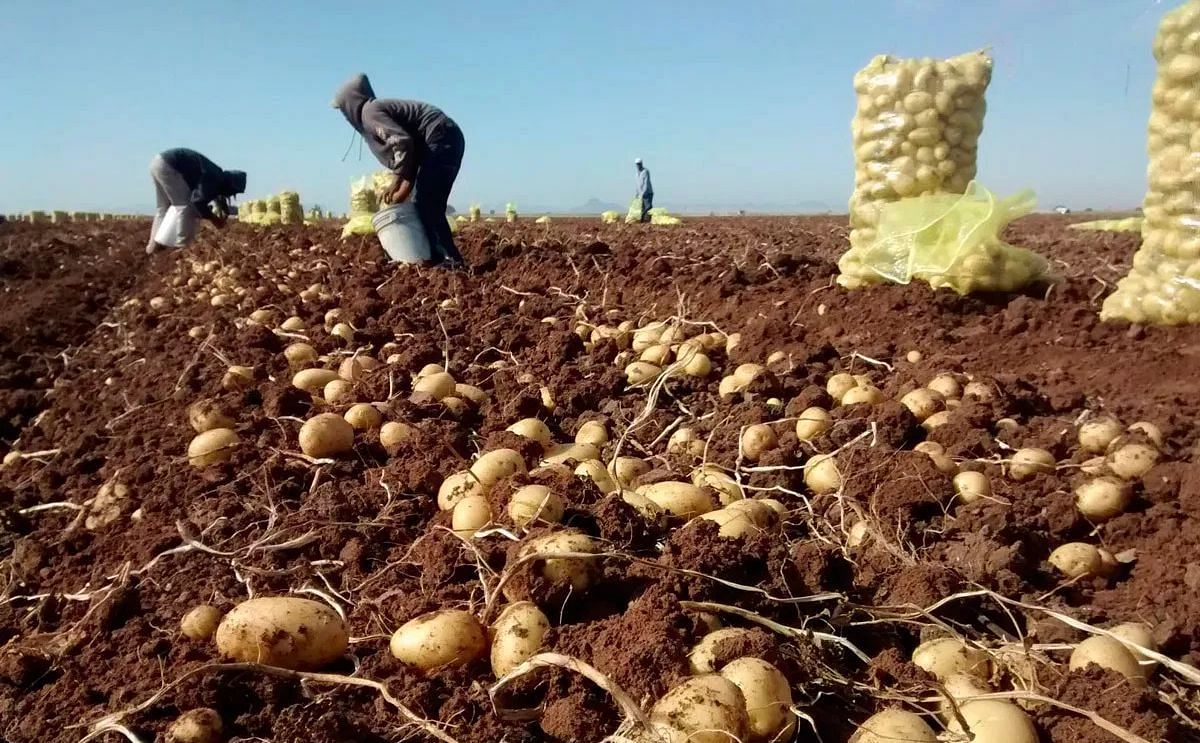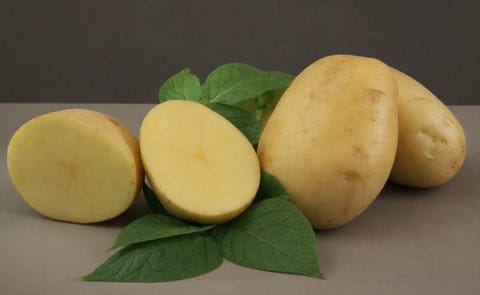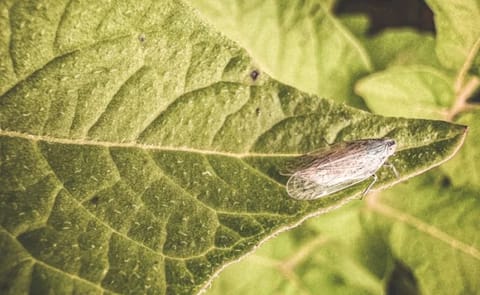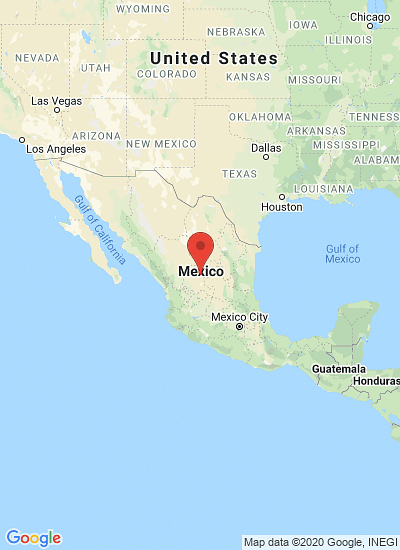Potato harvest in Sinaloa, Mexico
Primaire tabs
New Mexican potato variety Citlali shows resistance to late blight and zebra chip disease

In Mexico, researchers of the National Forestry, Agriculture, and Livestock Research Institute (INIFAP), part of the Mexican Ministry of agriculture (SAGARPA), have developed a new potato variety, Citlali, with improved tolerance to diseases.
The new variety - the result of classical breeding - showed high resistance to late blight (Phytophthora infestans) and zebra chip disease.
More in general, it meets all the criteria to become a commercial success, according to the researchers.
The Citlali variety is not completely immune to zebra chip disease, but it obtained better results than other commercial varieties, so this trait will continue to be studied by researchers, the Institute stated:
Mexico produces around one 1,716,000 tons of potatoes per year and Sonora, Sinaloa, Veracruz, Nuevo Leon, and Puebla are the leading producing states, according to data from the Agricultural Food and Fisheries Information Service (SIAP).
In 2017, Sonora and Sinaloa's potato production generated an income of 4,685 million pesos (USD 250 million); The value of the production in Veracruz and Nuevo Leon was over 1000 million pesos (USD 50 million) each that year.
The per capita consumption of potatoes in Mexico is relatively low at 14.8 kilogram per year.
The new variety - the result of classical breeding - showed high resistance to late blight (Phytophthora infestans) and zebra chip disease.
More in general, it meets all the criteria to become a commercial success, according to the researchers.
The Citlali variety is not completely immune to zebra chip disease, but it obtained better results than other commercial varieties, so this trait will continue to be studied by researchers, the Institute stated:
“The plant, which has small dark green leaflets, stems that have a slight reddish pigmentation, and sparse lilac flowers, develops in temperate climates and has a greater resistance to late blight and zebra chip disease; the latter one is a diseases of great importance and complexity in Mexico.”The experts said that the thin shoots and the internal spots in the tuberc were symptoms of zebra chip disease, which decreases product quality and appearance in the fresh market, and affects the producers' profitability.
Mexico produces around one 1,716,000 tons of potatoes per year and Sonora, Sinaloa, Veracruz, Nuevo Leon, and Puebla are the leading producing states, according to data from the Agricultural Food and Fisheries Information Service (SIAP).
In 2017, Sonora and Sinaloa's potato production generated an income of 4,685 million pesos (USD 250 million); The value of the production in Veracruz and Nuevo Leon was over 1000 million pesos (USD 50 million) each that year.
The per capita consumption of potatoes in Mexico is relatively low at 14.8 kilogram per year.
Like to receive news like this by email? Join and Subscribe!
Get the latest potato industry news straight to your WhatsApp. Join the PotatoPro WhatsApp Community!
Sponsored Content
Sponsored Content
Sponsored Content
Sponsored Content






